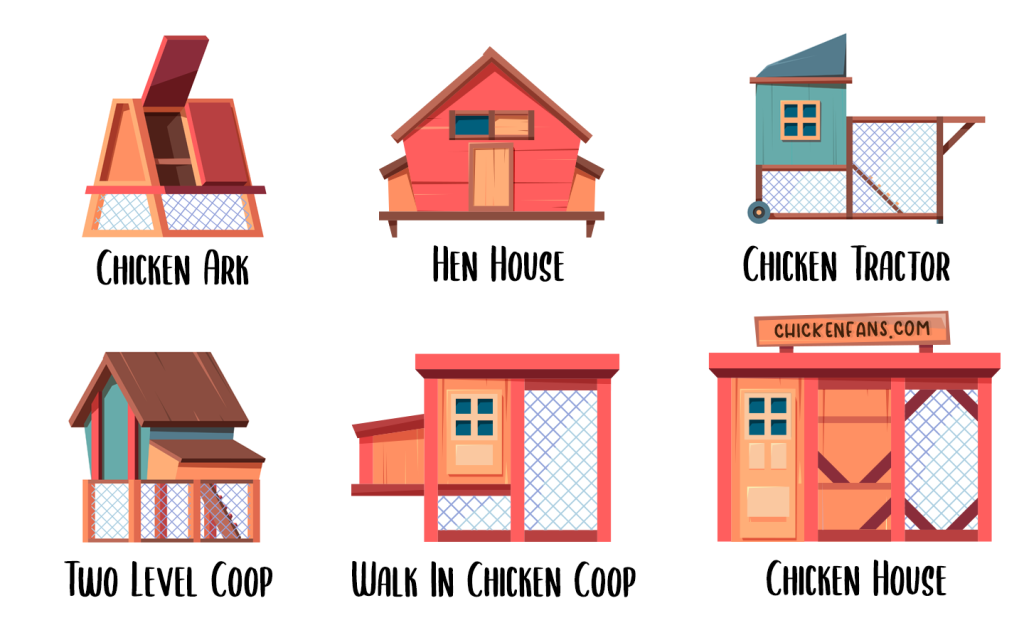| Number of Chickens | |
| Number of Bantams |
| Chicken Coop Size | 3 to 5 square feet per chicken |
| Chicken Run Size | 10 square feet per chicken |
| Bantam Chicken Coop Size | 2 square feet per bantam |
| Number of Eggs | 3-5 eggs per week on average |
| Number of Nesting Boxes | one box for every 3 to 4 hens |
As a rule of thumb, provide a minimum of 3 to 5 square feet per chicken in the chicken coop and a minimum of 10 square feet per chicken in the run. Reserve about 2 square feet in the coop per bantam. Provide a nest box for every three to four hens.
This chicken coop size calculator assumes that your chickens spend most of their time outside and only sleep inside the coop. If they live in the coop all day, your coop should be bigger. If you are new to chickens and this is your first coop, check out our beginner’s guide on how to raise chickens.
These are guidelines. Adjust for your personal situation. Australorps and Cochins take more space than Silkies. That’s why the calculator gives you a range as an indicator. A coop that’s too small makes the hens crabby and will make them peck each other.
The chicken coop calculator also gives you an indication of the minimal numbers. More space is better. Don’t adjust your plans to make your chicken coop or run smaller because the chicken coop calculator gives you a lower number.
Of all animals on the planet, chickens are the most abused ever. The poultry industry is raising laying hens and broilers in extreme forms of confinement with artificial lightning. Show your chickens some love and give them the space they need.
We have a complete guide to explain how much space chickens need and why they need it.
Depending on the size of your flock, you can opt for different kinds of chicken coops.

An ark is the smallest coop possible. It can usually host two to four chickens or bantams. If you want to learn more about the types of coops and their pros and cons, check out our complete chicken coop guide.
Plastic chicken coops are gaining popularity! They are much easier to clean than traditional wooden chicken coops, and you have less chance of a red mite infestation.
One of the most well-known brands of plastic chicken coops is Omlet. We’ve tested their Omlet Eglu Cube to determine whether it’s worth the dollars.
If you don’t have a large garden or a large flock, a portable chicken coop, like a chicken tractor, has many advantages over traditional chicken coops. Smaller coops can be easily made yourself; you don’t even need special skills or craftsmanship to do so. Check out our Chicken coop DIY plan with a free PDF for download.
Upgrade your chicken coop with an automatic chicken coop door, so you’re sure every chicken is safely tucked in each night. Check out our Best 5 Automatic Chicken Coop Doors to see all the automatic doors we tested, including Omlet, Run Chicken, ChickenGuard, and Vevor.
Your laying hens need nest boxes to lay their eggs. You could provide a nesting box per chicken, but usually, they all want the same box. Also, they don’t always lay at the same time. It’s not uncommon to be left with a nest box that’s never been used.
Install a nesting box for every three to four hens. You have more flexibility for larger flocks, and you can go for one box for every 6 chickens. The chicken coop calculator adds a box for every three to four chickens.
For more information on nesting boxes, check our complete chicken coop guide. Or go to ‘Bedding for a Nesting Box: Best Buys and Types‘.
The roosting perches will take a considerable amount of space in the chicken coop. For the roosting bars, you have to calculate 8 to 10 inches for each hen to roost comfortably. The chicken coop calculator takes into account the space for roosting, so you don’t have to provide extra space. For the exact dimensions and sizes of the roosting perches and how to place them, check our guide on roosting perches.
The chicken coop calculator gives you a very rough indication of the number of eggs per week. It uses an average of 4 eggs per week. This depends heavily on your hens’ breed, age, food, and season. The size of your flock will determine the amount of chicken coop space you will need to provide. So if you are looking to optimize the number of eggs with the available space, check our guide on chicken breeds with a specific section on the most common egg layers that are beginner-friendly.